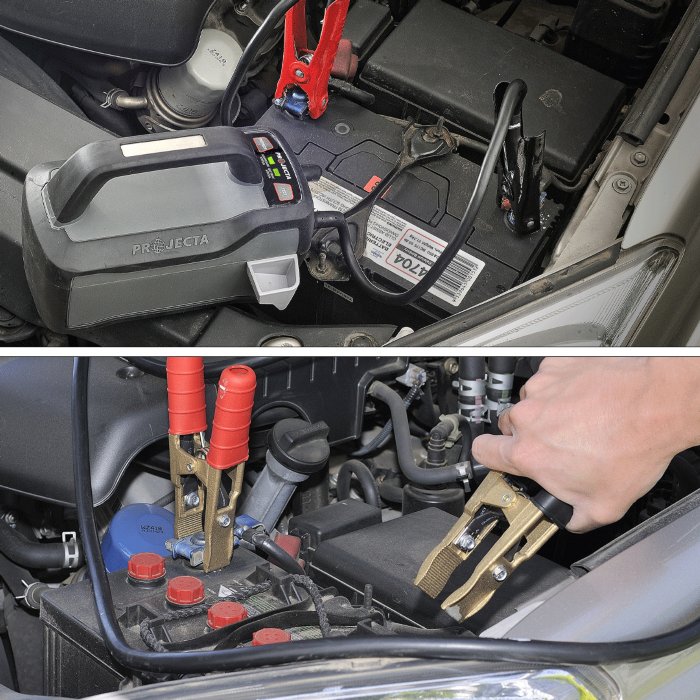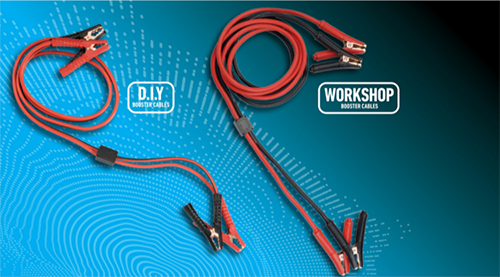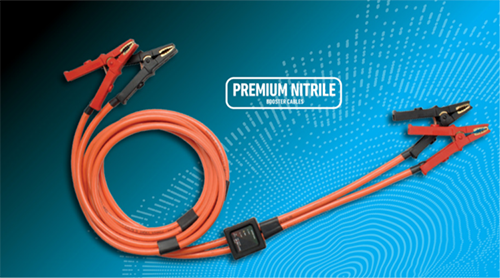
Lithium-powered portable jump starters have enjoyed rising popularity over the years, steadily replacing booster cables as the go-to emergency aid for a flat battery. Easily stowed in a glove box and incorporating secondary features such as a torch or USB power bank, lithium jump starters make for very practical gifts to loved ones. Vanishing then, are the days of walking around a cinema carpark, cables in hand asking strangers for a “jump” with that slightly embarrassed tone, because in a haste to catch the previews, you’d left your headlights on. But does this mark the death of booster cables? The answer is “it’s complicated”. Here’s why:
Worse than one flat battery, are two flat batteries. Lithium batteries are very good at storing power for long periods without needing to charge. However, if you’ve been using a jump starter’s built-in power bank to charge your portable devices, the jump starter may not have enough juice left to turn over an engine. As booster cables rely on a second battery/alternator as a power source, provided there are other vehicles nearby willing to help, you’re almost guaranteed to have power by carrying a set with you.
What about the car whose alternator won’t charge a battery or the battery won’t take charge? That one’s a win for the lithium jump starter, given you can carry it in the vehicle and start up whenever needed, without depending on other vehicles. In this situation, it’s also important to have a jump starter with enough power to start the vehicle on its own – without supplement from a drained battery. On the Projecta website, you’ll find recommendations about what jump starter may be appropriate for what engine size.
Then there’s the cost comparison: whilst lithium jump starters have come down in price over the years thanks to advancing technology and popularity, you do pay for their convenience and they are still not as cheap as a decent pair of booster cables such as Projecta’s DIY range.
One off-label use for booster cables that many 4WDers may be familiar with, is a bit of a neat trick that can be used in an emergency: With a broken axle or part of the undercarriage and stuck in the middle of nowhere, stranded adventurers have created an improvised arc welder using booster cables and a pair of batteries connected in series to increase the voltage. Welding can be dangerous for the inexperienced and in this context even for the experienced, so whilst we don’t recommend people attempt this, there is no denying the application has been used before in an emergency.
Some professional environments including workshops, panel beaters and dealerships, have jump starting as a morning ritual – moving cars with dead batteries out of the workshop, or shuffling them around the sales yard. Others only need them occasionally, for customer cars with battery or alternator issues.
Portable jump starters made this task a lot easier than lugging around a spare 12V battery and booster cables – though not by much. The first portable jump starters were heavy lead-acid batteries contained in a plastic housing with booster cables attached. Then lithium technology came along, and we now have revolutionary jump starters such as Projecta’s IS1500 – light enough to carry with one finger, but with enough amps (700A @ the clamps) and battery capacity to start several vehicles with up to 6.0L diesel or 8.0L petrol engines. The big bonus with this particular jump starter is its ability to recharge the power it spent starting a vehicle, in just 40 seconds of leaving it connected to a started vehicle – effectively allowing unlimited jump starting without wall-charging the device.
Booster cables still have their place in professional environments, however. Once again, cost can be a factor in this: workshop suitable cables designed for starting everyday road vehicles are still cheaper than professional grade jump starters. When it comes to heavy commercial, construction and earthmoving equipment, which can require large amounts of power to start, there is a use for heavy duty clamps (rated to 1000A), or specially insulated nitrile cable for unparalleled conductivity, which can be found in Projecta’s Workshop and Premium Heavy Duty ranges of booster cables.


In addition to this, the ServiceMate range of booster cables incorporate surge protectors and vehicle harnesses with battery connectors that allow for fast and frequent jump starting. Cables also allow a degree of flexibility in their length and size, fitting into smaller spaces and across longer distances where jump starters can’t necessarily go.
Booster cables also allow you to connect multiple batteries in parallel to increase the current in instances where a jump starter may not produce sufficient power to start it. You just need to be sure that the clamps and cable are suitably rated for the amount of current being passed through them.
So there you have it – booster cables aren’t dead yet and there are even some applications for which they retain an exclusive advantage. Jump starter technology continues to innovate, however, and these are truly convenient devices for emergencies, be it a flat car battery or a flat phone. If you can afford to carry both, you’ll be well and truly covered.
This article is brought to you by Projecta